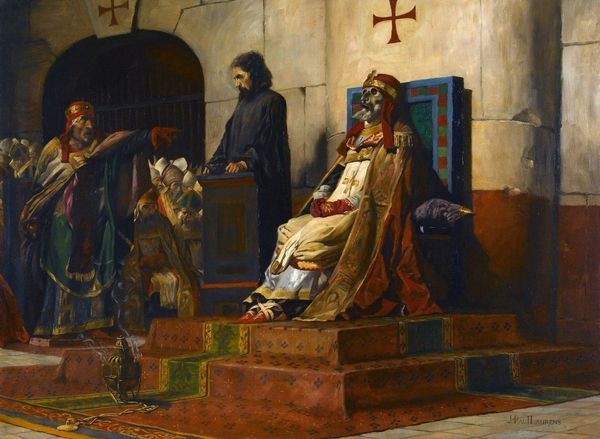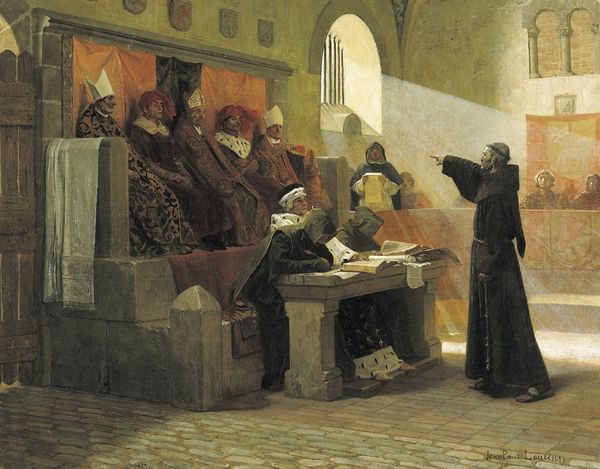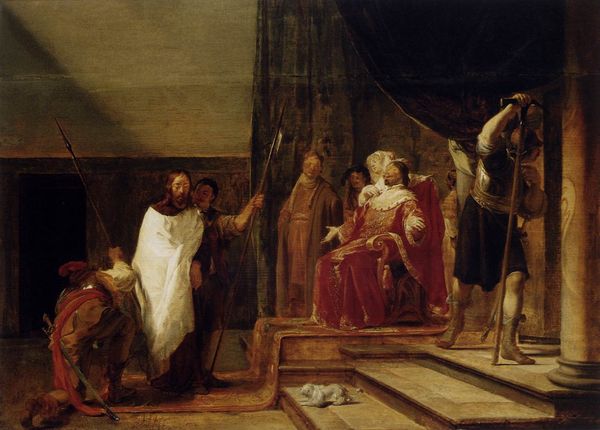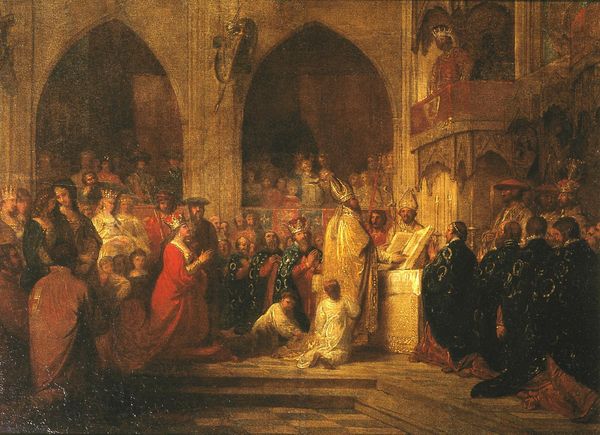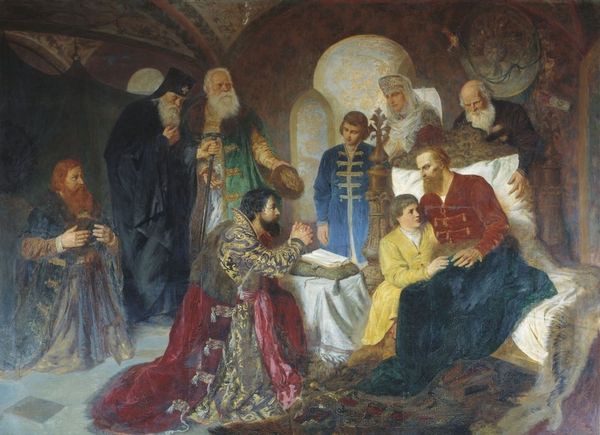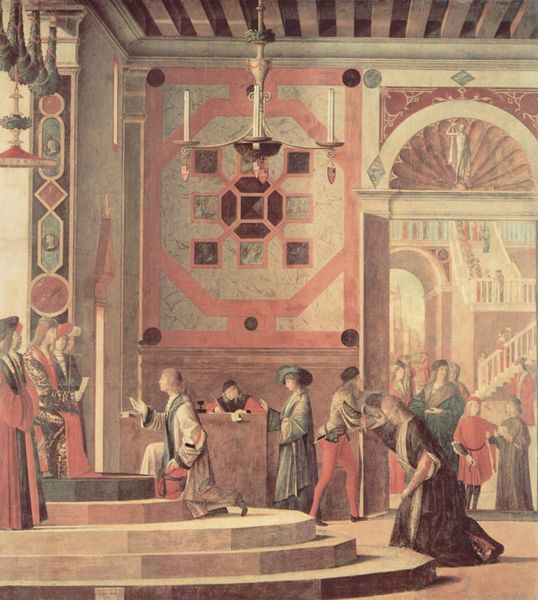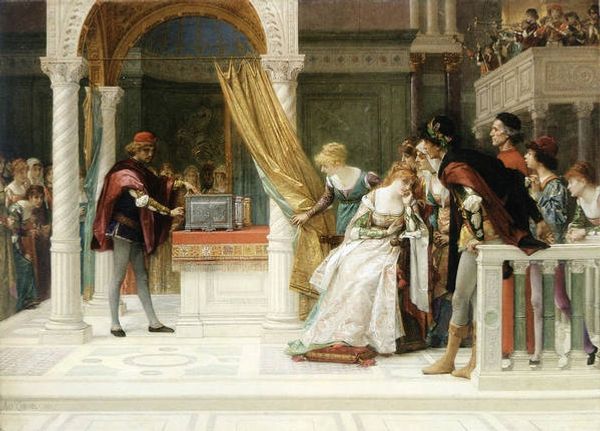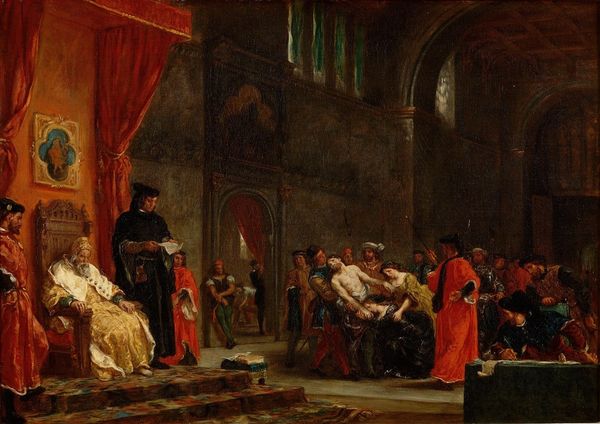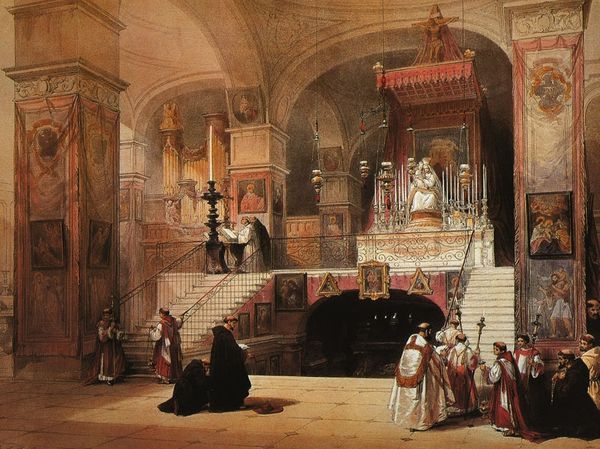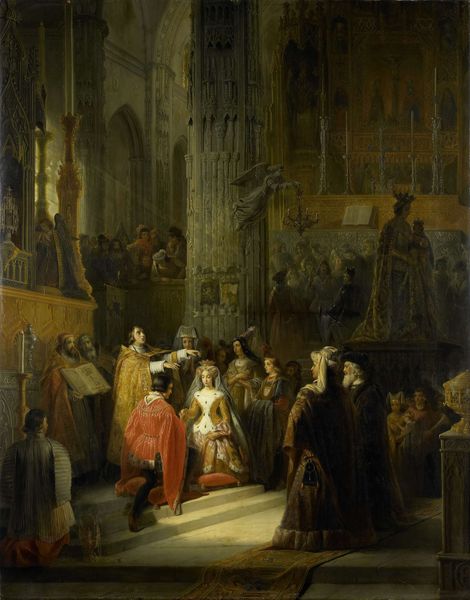
Pope Formosus and Stephen VI - The Cadaver Synod 1870
0:00
0:00
jeanpaullaurens
Musée des Beaux-Arts de Nantes, Nantes, France
Copyright: Public domain
Curator: Jean-Paul Laurens painted this remarkable scene in 1870, titled "Pope Formosus and Stephen VI - The Cadaver Synod." It now resides at the Musée des Beaux-Arts de Nantes. Editor: Whoa. Right away, I get a chilling vibe. The scale, the somber hues… it's undeniably macabre, right? There's a palpable sense of judgment hanging in the air. Like, a reckoning of souls. Curator: Precisely. Laurens recreates the infamous Cadaver Synod of 897, a truly bizarre event in papal history. Pope Stephen VI exhumed the body of his predecessor, Pope Formosus, put him on trial, and posthumously condemned him. Editor: Posthumously condemned! Seriously? What a theatre of the absurd. You’ve got this robed, skeletal figure… propped on a throne. It’s theatrical in its horror. What's the meaning behind it, though? It's not just to give the audience the shivers? Curator: Oh, definitely more than just shivers. This painting is soaked in the politics of imagery. The trial was Stephen VI’s attempt to legitimize his papacy by discrediting Formosus. Laurens, painting almost a thousand years later, uses the historical moment to comment on the corruption and power struggles within the Church. Editor: Power play dressed in religious garb. It seems artists just can't get enough of pointing out that very ugly side of politics! It’s fascinating how Laurens used that medieval narrative to tap into something evergreen about institutions. Still, even without context, the sheer spectacle—the theatrical lighting, the disapproving faces, that vacant throne— it’s haunting stuff. Like an oil painting turned into an gothic metal album cover. Curator: Well put. And consider the material Laurens used, the very visible brushstrokes in painting contribute to that visceral sense of decay and discomfort, don't you think? Editor: Yes, the paint is almost its own character. There's such skill on display in capturing the coldness. A history painting that transcends the history it shows. Anyway, if any artwork screamed the adage "Sic transit gloria mundi," it's this one. What a chilling look at power and earthly fate. Curator: Indeed. Laurens certainly captured the darkness of the scene and how power can twist into such morbid spectacle. It is a powerful reminder of the complexities within history.
Comments
No comments
Be the first to comment and join the conversation on the ultimate creative platform.
